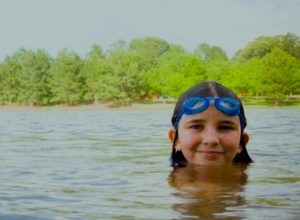Take caution of water up your nose when swimming on lakes, rivers
Chronicle Media — August 21, 2016
Caution is urged when swimming in lakes and rivers this summer. An organism known as Naegleria fowleri, commonly referred to as the “brain-eating amoeba,” can be found in in freshwater across the U.S. The organism travels through the nose.
With summer in full swing, many people are flocking to local beaches and ponds to take a dip.
Amidst the fun, swimmers may get water up their nose, causing a burning sensation and, sometimes, sneezing. But the danger isn’t always over when the discomfort subsides.
Deadly organisms may be lurking in your local watering hole.
A fresh water-dwelling organism known as Naegleria fowleri, commonly referred to as the “brain-eating amoeba,” is responsible for the recent death of an 18-year-old Ohio teen after a white-water rafting trip in North Carolina.
The amoeba, present in freshwater across the U.S., causes amebic meningoencephalitis, a condition in which the covering of the brain and spinal cord swells due to the infection. The organism travels through the nose up the nerve tissue and into the brain, where it is nourished by the brain.
Symptoms of the infection present around five days after nasal exposure to the organism and may include headache, nausea, vomiting and fever. Death, which does not occur from oral intake but from nasal ingestion, normally occurs up to 18 days after symptoms begin.
According to the Centers for Disease Control and Prevention, the occurrence of the condition are rare — between 0-8 cases of parasitic amoeba infections every year, with 37 registered from 2006-15. Although they are unlikely, almost every case is typically fatal.
“The amoeba is found in warm/hot freshwater including lakes, rivers and hot springs. It seems that large lakes, such as Lake Michigan, aren’t affected by this bug, since the organism likes hot water, which tends to only be in smaller bodies of water. Most cases occur in the South, although more recent cases have been reported in Minnesota and Ohio,” says Brian Walesa, director of Epidemiology and Infection Prevention at Advocate Christ Medical Center in Oak Lawn.
Walesa says that while rare, the infection is frequently related to water sports. “On top of that, the organism lives in the sediment, on the floor of these water sources, so kicking up sand or swimming deeper could be additional risk factors,” he says.
There is no cure for amebic meningoencephalitis, but the CDC suggests keeping your head above water, and using a nose clip or holding your nostrils shut with your hands while swimming and participating in other water activities. “Of course, the only fool-proof way to keep from becoming infected is to avoid water-related activities in warm freshwater,” Walesa says.
— Take caution of water up your nose when swimming on lakes, rivers —



